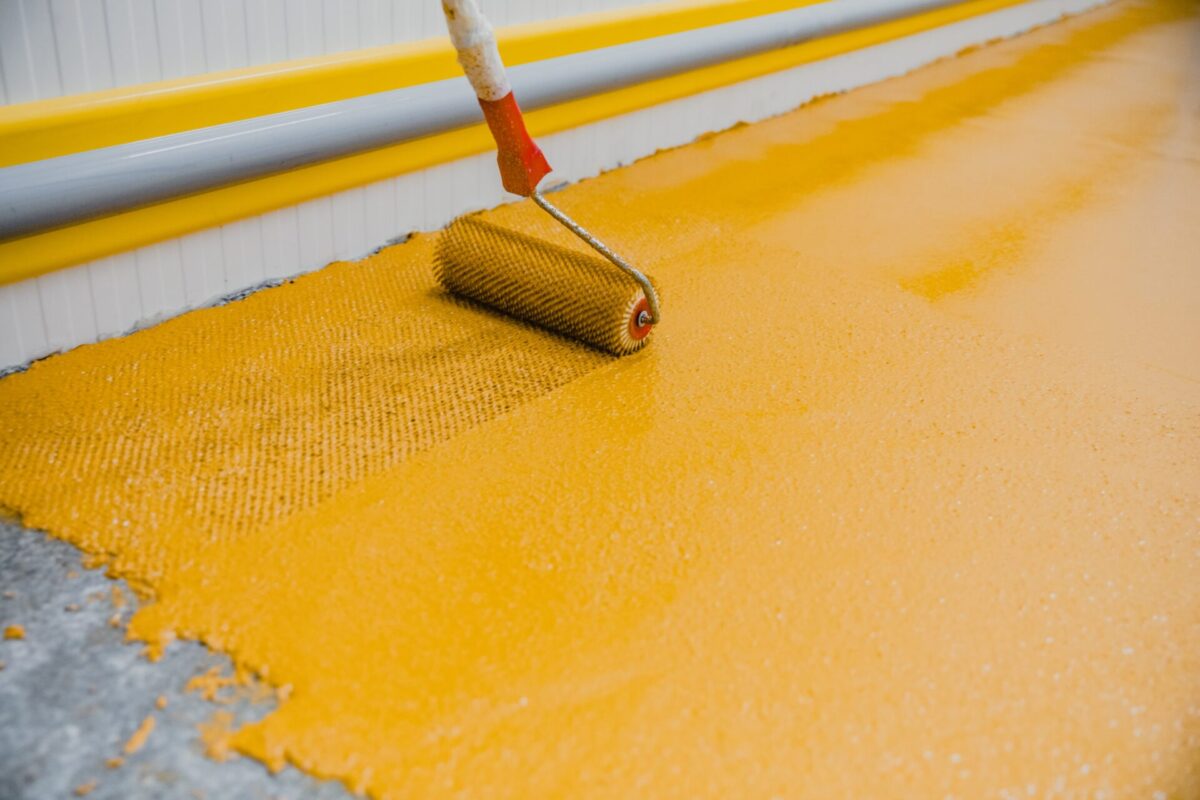Understanding the Different Types of Industrial Protective Coatings and Application Methods

Posted on July 5, 2023 by Brent Phillips
Industrial protective coatings are specialized paints or coating systems that protect surfaces from damage caused by harsh environmental factors, such as:
- Corrosion
- Chemicals
- Abrasion
- Weathering
- Ultra-violet (UV) rays
These coatings are essential for maintaining the longevity of industrial equipment and structures, like:
- Water towers
- Above-ground and underground storage tanks
- Oil and gas pipelines
- Water treatment facilities
- Off-shore drilling
Corrosion protection is one of the most essential functions of coating systems. Corrosion can cause significant damage to metal surfaces, leading to structural weakness and even failure.
Without the protective barrier created by coatings between the surface and corrosive agents, it would be nearly impossible to prevent rust from forming and other forms of corrosion.
In addition to corrosion protection, coatings offer chemical resistance. Many industries use harsh chemicals in their daily operations that can cause damage to unprotected substrates. The layer creates a barrier between the chemical and the underlying surface.
Abrasion resistance is another crucial function of industrial coatings. Many industrial environments involve heavy machinery or abrasive materials that can cause wear and tear on surfaces over time. Industrial coatings offer an extra layer of protection against abrasion, extending the life of equipment and structures.
These coatings have various applications across various industries, including water asset management, manufacturing, oil and gas, marine, construction, transportation, and more. Without these specialized coatings, many sectors would face significant challenges in maintaining their equipment and infrastructure over time.
Common Types of Industrial Coating Systems
There are many forms of coating systems with different applications, so to keep things simple in today’s blog, we’ll discuss three of the most commonly used industrial coating systems:
- Epoxy coating
- Polyurethane coating
- Zinc-rich primer
Epoxy Coatings: Widely Used
Epoxy coatings have become the most widely used type of industrial protective system in recent years. These systems get made from a combination of resins and hardeners, which, when mixed, create a strong and durable material that is resistant to liquids, chemicals, abrasion, and moisture.
Epoxy systems come in various forms, such as epoxy paint, floor coating, and epoxy primer. The main advantage of using epoxy systems is the ability to bond strongly with various surface substrates.
Polyurethane Method: Ideal for High-Performance Applications
Polyurethane systems have become increasingly popular in high-performance applications due to their exceptional durability, flexibility, and resistance to abrasion, chemicals, and water. Polyurethane methods are available in different forms, such as paint, foam insulation, and polyurea.
One unique advantage of polyurethanes is a layered application process to build up in thicknesses depending on the specific application requirements. These coatings are also known for their ability to withstand extreme temperatures and weather conditions.
Zinc-Rich Primer: Effective Against Corrosion and Rusting
Zinc-rich primers have become increasingly popular as a metal finishing due to their effectiveness against corrosion and UV damage. The primer is commonly used on steel surfaces to provide a layer of protection that prevents rust and other forms of deterioration.
One common form of zinc-rich primer is galvanized steel, which involves applying a layer of zinc to the surface through a process called zinc plating. The results create a durable and long-lasting protective coating that extends the lifespan of the metal.
Additional Protective Systems
There are many different types of protective systems on the market. Some have more significant EPA restrictions depending on the application and substrate material. Here are a few other types of systems.
- Acrylic
- Alkyd
- Ceramic insulation
- Coal Tar
- Fluoropolymer
- Polyaspartic
- Powder coating
- Siloxane
- Silicone Rubber
- Vinyl Ester
Selecting the Right Industrial Protective Coating for Your Application Needs
Protecting systems is essential to safeguarding machinery, equipment, and structures from harsh environmental conditions and wear and tear. Although selecting the suitable coating for your application can be daunting. There are several factors to consider when choosing a protective system, that includes:
- Cost-effectiveness
- Type of substrate
- Environmental factors
- Application method
- Material getting stored
Environmental factors such as temperature fluctuations and exposure to chemicals or moisture should also get considered when selecting a protective coating system. The proper protection should be able to withstand these elements without deteriorating quickly.
Lastly, the type of application method you chose dictates how adequate the protection will be and how long it will last. Most protective systems require specialized equipment or skilled professionals for proper application.
When you’re choosing a system for your application needs, it’s important to take all the factors into consideration. This can make a huge difference in the quality of the product you end up with—you want something that’s going to be both protective and durable, no matter the environment.
Contact the coating professionals at Cunningham Inc. by calling (620) 848-3030 today!